Monthly statistics for May 2013:
Statewide Average Precipitation: 4.47 inches (43rd wettest since 1895)
Statewide Average Temperature: 64.6°F (30th coldest since 1895)
* Values generated from preliminary numbers
Cool Start, Warm Finish to May
May 2013 started off cool — almost cold (at least for May). Most of North Carolina experienced maximum temperatures in the first week of May that were some of the coolest on record for the month. However, temperatures in the second half of the month were quite a bit warmer, with overall mean temperature rankings for May 2013 only slightly on the cool side of history.

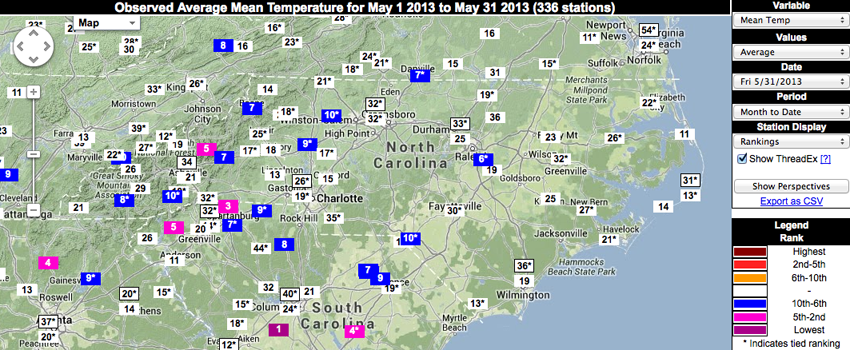
Not Much Change in Precipitation Patterns
Precipitation in May was split between the “haves” and the “have nots”. Storms tracked to the west, bringing substantial rainfall to western NC. Indeed, both Morganton and Boone reported the wettest May on record. In contrast, areas east of I-95 were generally dry, with many towns reporting one of their 10 driest Mays on record. To highlight this contrast, compare the rainfall ranks at Henderson and Tarboro. These locations are approximately 60 miles apart, but Henderson recorded its 4th wettest May on record, while Tarboro recorded its 4th driest May. Precipitation along the southern coast was even lower, with radar-based estimates suggesting less than 1 inch of rain during May.
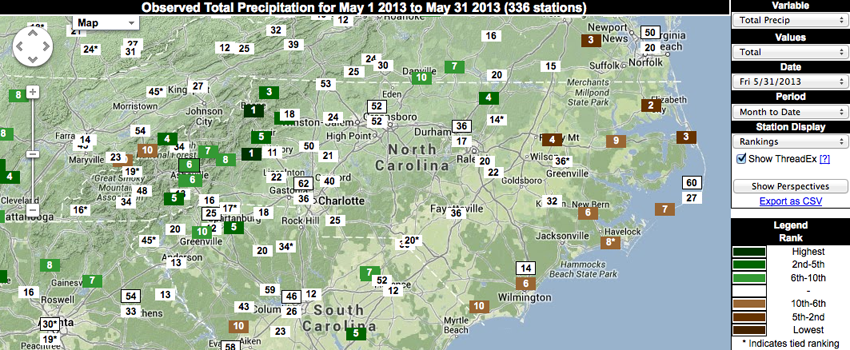
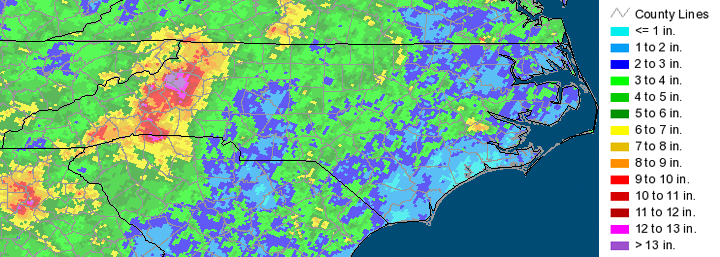
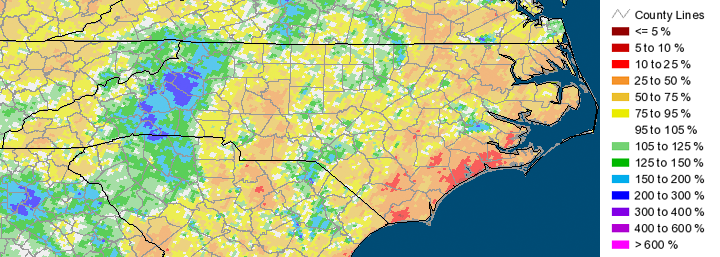
Several Reports of Localized Flooding
Damage reports in May were clustered with the heavy storms in western NC, where localized flooding was a common occurrence. Some hail and wind damage was also associated with these intense storms.
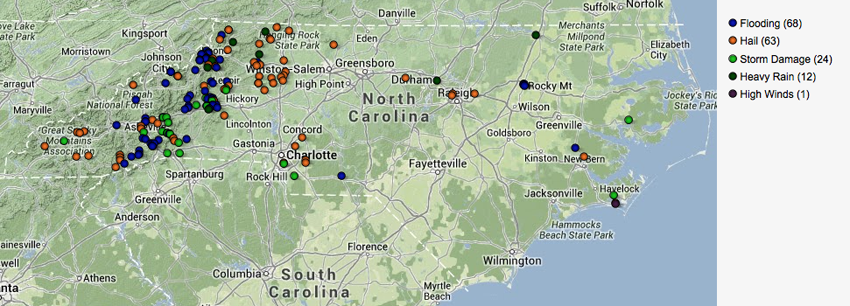
Is Drought Still a Concern?
Precipitation in central and western NC eliminated any concerns about water resource supplies. However, drier conditions in eastern NC left some concerns about soil moisture levels lingering in May, especially in the primary crop production areas east of I-95. Of course, the remnants of Tropical Storm Andrea eliminated those concerns, but that’s a topic for the next climate summary.
